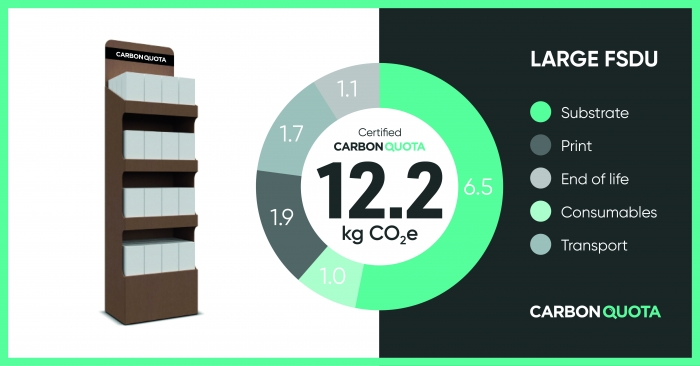Relax, You’re not alone - There are companies out there that can help you save the planet.
Governments, individuals and businesses are all grappling with how to do their bit as the climate change clock ticks on. To add to the confusion, terminology such as GHG, net zero, carbon neutral, SBTi, SDG, and biodiversity collapse are regularly bandied about and there’s an assumption everyone knows what they mean. If you need help, you’re by no means alone, and if carbon measurement and reduction is one of the issues you’re looking into a company called CarbonQuota may be useful.
This is a carbon business specialising in the print, display, publishing, and marketing industries, that blends print expertise with scientific rigor.
Co-founder Dominic Harris says the company purposely focused on this sector because there is so much potential for businesses to measure and reduce carbon emissions, and demonstrate strong leadership to the wider manufacturing sector. The measure-and-reduce approach ensures printing companies, no matter what size, can play their part in reducing their impact on global warming.
“The biggest issue facing the planet is climate change and it is within printing companies gift make changes quickly,” says Harris. “There is some great work happening at companies like ImageCo, but they are a rarity and everyone needs to take this seriously, and do it fast.”
Increasingly, print customers are pushing their print supply chain to reduce their carbon emissions too, and the team at CarbonQuota have seen a marked increase of printers being asked to declare their carbon footprint to such businesses.
Print businesses can start by knowing their baseline carbon emissions to then support a reduction programme. This baseline is how you show improvement and is a technical process that should be carried out and certified - by companies such as CarbonQuota, which works with the likes of ImageCo, Gardners, Delta and Echo House.
“We can carbon footprint anything from a poster to a building and even a full end-to-end supply chain!” says Harris.
“The best place to start is the carbon footprint of what is under your direct control, before thinking about materials, distribution or what happens to your product at the end of its life - these can be done afterwards.
“Whilst many of our customers are printers, print managers and design agencies, we also deal with the mega-brands to help them drive carbon reduction programmes in their print supply chain.
“An operational carbon footprint starts with baselining from two years of carbon emissions as this allows for peaks and troughs from trading. We support this plan with a set of detailed recommendations to help the carbon reduction process for the next 12 months and repeat the project quarterly or annually to certify the reduction.
“We provide every customer with a certified report and data as this demonstrates credibility, which is especially important when publishing carbon emissions to customers. It’s like getting your accountant to sign off your financial accounts.”
Harris flags up some interesting statistics from work CarbonQuota has done with clients - see graphic below.

How it works
Whilst CarbonQuota can, basically, carbon footprint anything, it recommends you start with your own operations because this is where you can make quick and ongoing carbon reductions. It’s also where you can impress your customers the most with robust data about your carbon emissions from a certified process.
It costs about £1,200 per operation for a study. CarbonQuota makes the process as easy as possible, but it obviously requires information from you, such as utility bills, invoices, expense claims, fuel purchases, standard accounting information and some general information. The company provides a template that acts as a checklist to make sure all the relevant aspects are recorded. One of its consultants will work with you to prepare the data and its life cycle practitioners independently assess each calculation and certify the formal report.
This certified report and supporting data includes: a series of intensity ratios (e.g. carbon footprint per tonne of substrate, per employee or per £ of sales); recommendations of reduction targets; suggestions for how to reduce your carbon emissions; and the all-important CarbonQuota certification and labelling that you can use in your customer communications and marketing.
This programme allows you to work on an annual review cycle and demonstrate through certified reporting that the changes made to your operation is reducing your impact on climate change.
There are, as it stands, no legal obligations for most printing businesses to de-carbonise to fight climate change - only businesses with a turnover of £36m or more must provide information on their activities and convert them to equivalent carbon emissions within their mandatory reporting. This is called Streamlined Energy and Carbon Reporting (SECR) and CarbonQuota can help there too.
In short, investment in carbon reduction is a choice. It will cost you money in the short-term but you should see an ROI in the medium-term through cost savings and customer retention.

